
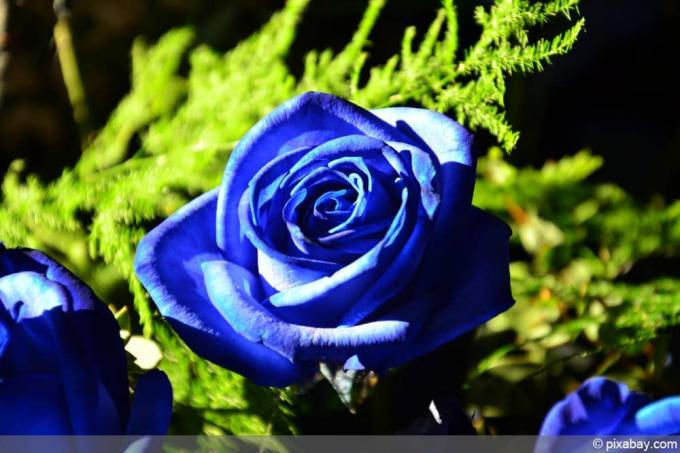
Table of contents
- Where do blue roses grow?
- Why there are no "real" blue roses
- The fairy tale of the blue rose
- Blue roses, their meaning in the west
- Dye roses blue, that's how it works
Giving away roses also reveals your feelings. Without words, just through the effect of the color of the flowers. Each shade has its own meaning in the flower language of love. The statement of red roses is well known. But what about blue roses? does it even exist? And if so, what message of love do they bring to the recipient?
Where do blue roses grow?
There are many blue flowers in the large flowering family. However, nature did not intend blue roses. No blue rose has ever been discovered in this country or in any far-off country. It was and is a product of fantasy and longing. And because strong desires push for fulfillment, the blue rose is still a part of our real world. As a motif in art, but also as a living flower to which the color was subsequently breathed.
Why there are no "real" blue roses
A rose bush comes to life in spring and creates beautiful blooms. He uses "almost" the entire color palette. However, the rose bush can never form a natural coloring agent: the blue.
- the genome for blue is completely absent
- Roses are slightly acidic in origin
- too acidic for the blue clay
- Blue needs a neutral PH value
But why is there a desire for the blue rose at all? It may originally have been sparked by a fairy tale. There's a lot to be said for it.
The fairy tale of the blue rose
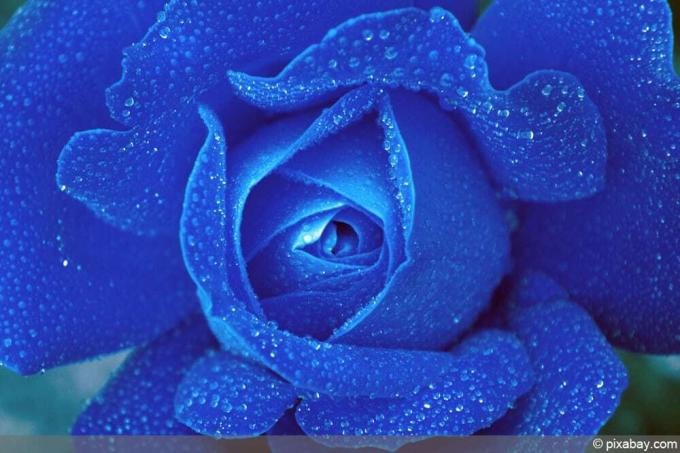
In distant China lived an emperor whose daughter did not want to marry. The Emperor urged his daughter, but she stubbornly refused. Probably also because no one was able to win her heart. In order to be left in peace, she made one unfulfillable condition: the suitor must bring her a blue rose. She got a blue gemstone rose, a colored rose and a painted one. But of course no one was able to bring her a real, live blue rose. She wasn't unhappy about that at all.
But then came true love...
Then a traveling singer came to the capital, and the two fell in love. Now the princess wanted to get married too. She was sad because her own condition had now become an obstacle. But the lover was not deterred and promised her that he would come to the palace with a blue rose the next day. There he stood before the emperor, holding a white rose, and asked for the hand of the princess. "But the rose is white," said the Emperor. "No, the rose is blue," contradicted the princess. The Emperor gave in, after all he wanted to see his daughter married at last. He presented the couple with a country house, and many white roses were planted in the garden. However, it was always called the "blue garden".
Tip:
The fairy tale of the blue rose is of course a lot longer than this short summary. If you want to read it in its entirety, you can easily find it on the Internet.
Blue roses as a symbol for fulfilled love
In the Far East, the demand for blue roses is particularly high because of the fairy tale. Often given as gifts for engagements and weddings, they are said to bring the couple everlasting love. Just like in a fairy tale. For this, extra white roses are dyed blue. Always looking for something special, unique, people in Europe have now also discovered the blue rose for themselves. However, their triumphal procession is only just beginning.
Blue roses, their meaning in the west
In Asia, the love message of the blue rose is clear: it stands for perfect and fulfilled love. In the west, on the other hand, the blue rose has another meaning. Perhaps because the naturally growing blue rose does not exist and is only a pipe dream, it has also developed into a symbol of unfulfilled longing. Even a colored blue rose is a rarity in the flower shops in this country. Anyone who reaches for it may also say to the recipient: "You are unique and extraordinary like this rose."
Bred "Blue Roses" are purple
The dream of the blue rose challenged rose growers. Her ambition was awakened, many wanted to breed this longed-for rose. Over the centuries, attempts have therefore been made again and again to achieve a blue rose color by crossing existing rose varieties. But there was always no success. The hoped-for blue turned to purple at best, nothing more. In the meantime, the futility of these attempts has been clarified, genetic engineering clearly shows why no blue rose can develop in this way. According to the law of heredity, the new rose can only form colors from the existing genetic material of the rose.
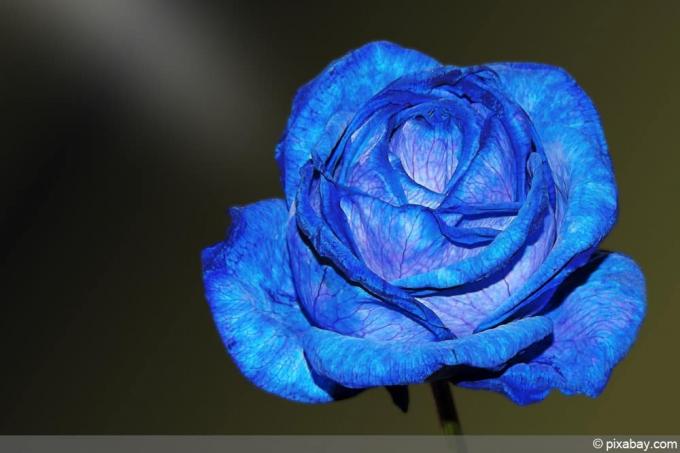
Blue roses from the gene lab
The age of genetic engineering has not stopped at roses either. First, genetic engineering provided the explanation why a really blue rose could not be bred conventionally: it lacked the "blue" gene. She then showed a way how a blue rose can still bloom: through genetic manipulation. And in fact, the genetic researchers at the Australian company Florigene have now succeeded in doing this. Since 2009 there is "Applause", a genetically modified rose that forms blue-purple flowers. It is already approved on the Asian market. Although it costs several times as much as any other rose, the demand is huge.
Rose fertilizer for a radiant blue
What the genetic researchers have not yet succeeded in doing convincingly, Dutch researchers seem to have succeeded in the meantime. They grew a blue rose without genetic engineering. Their secret remedy is a special fertilizer containing cobalt that is given to the roses in early spring. The result is rose petals in a strong blue. It's only a matter of time before this fertilizer hits the garden market.
Buy blue roses
If you want to buy blue roses to express your feelings in a floral way, you don't have to travel far. Some flower shops here also offer blue-colored roses. There are also some types of roses available for the garden that have “blue” in their names. However, they give a hint of the blue rather than actually being blue. Nonetheless, these varieties are beautiful. Until the time comes for blue roses to grow, let them adorn our gardens.
A notice:
Genetically modified products can only be sold in Europe if they are approved. The approval process is lengthy, so it may be a while before genetically modified roses are also available here.
Dye roses blue, that's how it works
Growing a blue rose proved impossible. It took 20 years to develop a bluish, shimmering rose through genetic engineering. Dressing a rose in a blue robe in your own four walls, on the other hand, only takes a few days. Everything that is necessary for this is easy to obtain and also extremely cheap. You need:
- white roses in the desired number
- a flower vase
- Water
- blue ink or blue food coloring
- and a few days of patience
And this is how rose dyeing goes step by step:
- Buy white roses in the number you want. These should still be tightly closed or at most just a little open.
- Fill the vase with tap water.
- Add a few drops of blue ink or food coloring to the water until it turns dark blue.
- Cut the rose stems at an angle with a sharp knife so that they can absorb plenty of colored water.
- Leave the roses in the blue water until you like the blue color of the flowers.
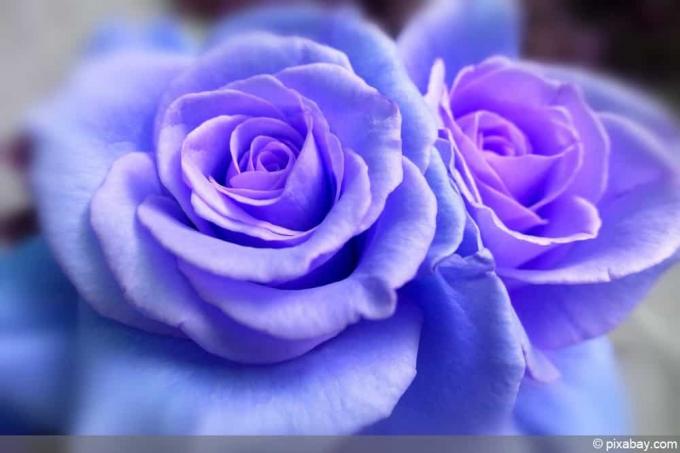
As soon as the roses have taken on a blue nuance, they can be used to convey your personal message of love. Provided, of course, that the recipient knows the language of flowers or gets a little tutoring.
Tip:
Dyeing takes a few days. Especially if you want to give away the blue roses, they should last as long as possible. Therefore, buy the white roses from the florist as you can find good quality here.
 garden editorial
garden editorial I write about everything that interests me in my garden.
Learn more about types of roses

Pruning wild roses: 6 tips for trimming wild roses
Wild roses should not be missing in any natural garden. They are easy to care for and bloom on two-year-old wood. The delicate blossoms and autumnal rosehips enchant the garden well into winter. To maintain their beauty, however, some maintenance is necessary.
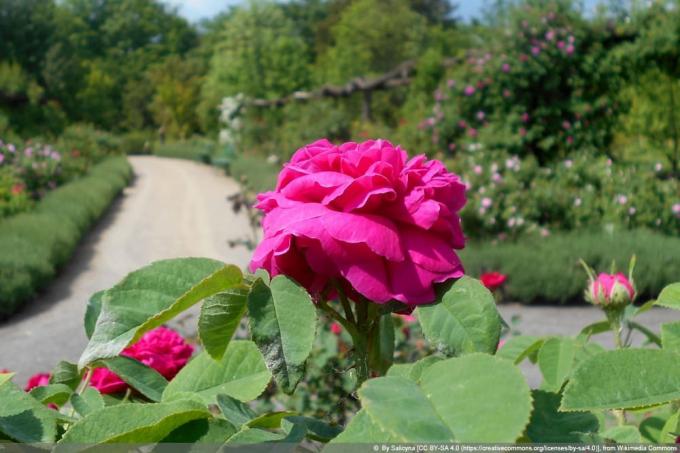
18 historical roses with picture | Varieties of roses for the home garden
Creating a rose garden is not as easy as you might think. The gardener often only becomes aware of the variety of different flower colors on the market when the purchase decision is imminent. So that the selection does not have to be made spontaneously and that it takes into account both the appearance and the location requirements can be optimally adapted to the circumstances of his garden, he will find an overview of 18 historical ones here varieties of roses.

Moss rose (Rosa centifolia var. muscosa): care from A to Z
The moss rose (Rosa centifolia var. Muscosa) is a profusely flowering old rose variety that resulted from a bud mutation. The special thing about her is the green to brownish moss on the buds, sepals and flower stalks and their sweet, slightly resinous scent.

Making roses winter-proof: fleece, bark mulch & Co | Ideal time
Roses depend on good winter protection so that the royal blooms can be repeated next year. The focus is on specific precautions for the crown, trunk and roots, tailored to the respective rose type. This guide gives a practical explanation of when and how to best winterize your roses.
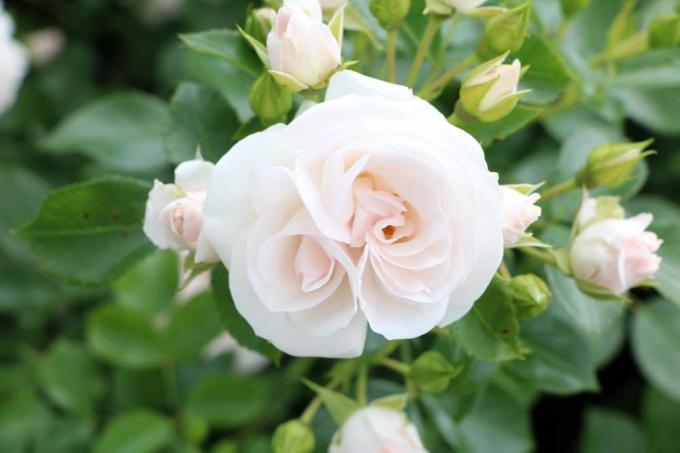
Create a rose bed: easy to care for with roses, perennials and stones
The rose is not considered the queen of flowers for nothing. Her beauty is simply incomparable. It goes without saying that under these conditions it belongs in every garden. Here you can learn how to properly plant a rose bed and properly care for the royal plants.
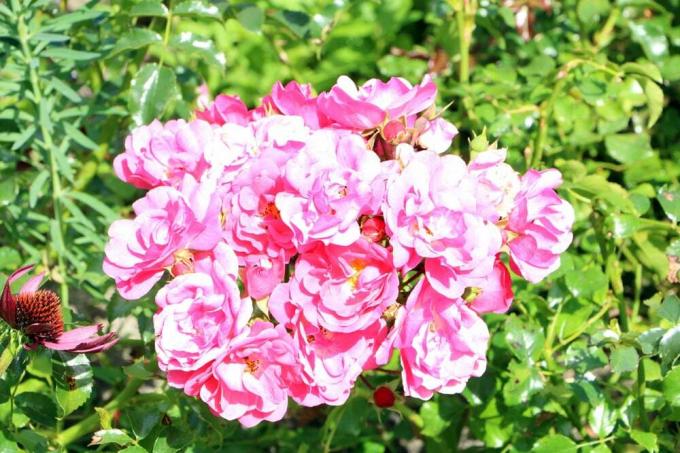
Tub roses: rose care in the pot | Repot roses properly
In the summer months, the balcony and terrace can be embellished with blooming roses, as these flowers can also be planted in tubs. However, due to the deep roots, there are some important factors to consider when choosing the planter, location, care and repotting.


